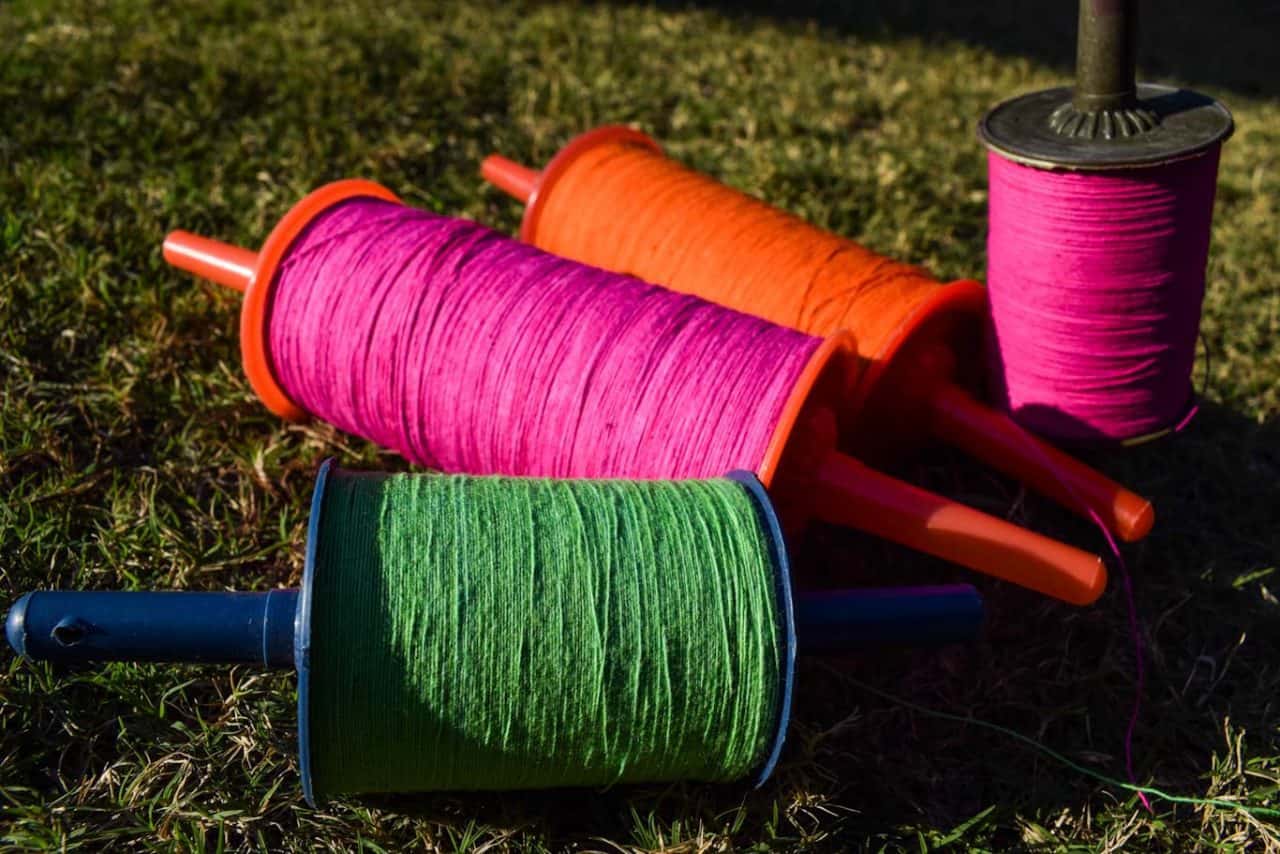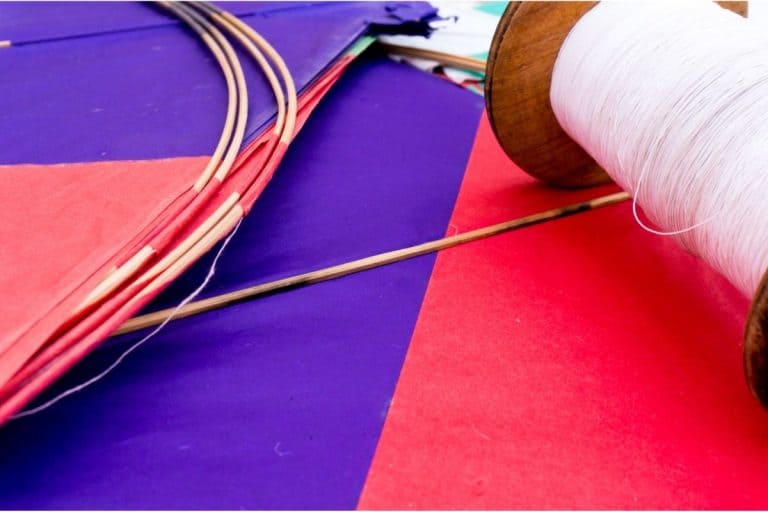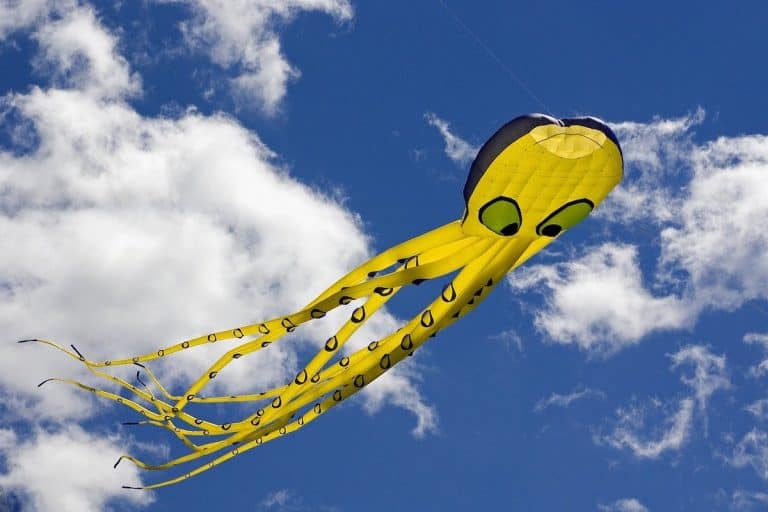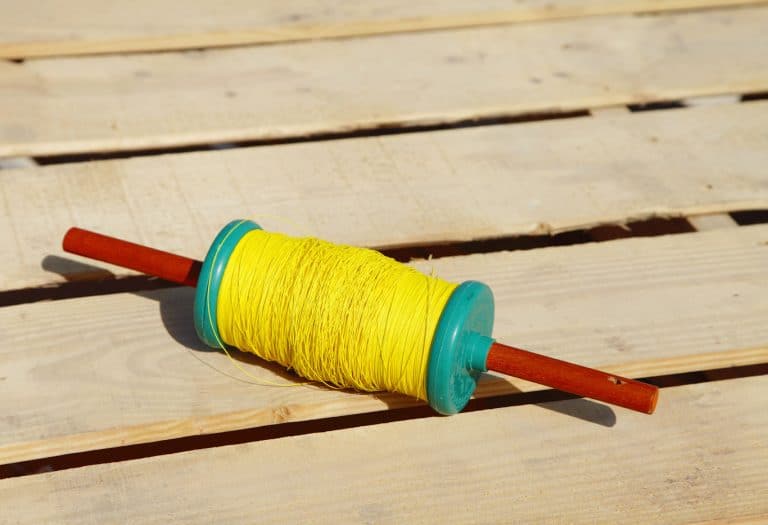Can Normal Thread Be Used For A Kite?
Having the right kite line has a direct impact on kite performance. You may be wondering what thread to use on your kiting equipment. This article provides an in-depth look at the kind of threads that should be used on kites.
Kite lines used for toy kites, stunt kites, kitesurfing and normal threads differ significantly. When it comes to material, wire, nylon, silk, and cotton are used. The availability and pricing of these line strings vary.
What Kind Of Thread Do You Use For A Kite?
A Kite line is also known as a kite string or a kite thread. It is the string that connects the kite to the kite flyer. These strings do other things such as functioning as a bridle, special duty, and control tug. Nylon, cotton, silk, and wires are used to make these lines (Source).
The popularity of kite flying has increased over the years, with many people appreciating the sport. Finding the best line for flight, however, can prove challenging. When picking a suitable line, factors such as the material and weight should be considered. The strengths and weaknesses of different lines should also be determined (Source).
Kite lines used on toy kite and those used for stunt kites and kitesurfing differ significantly. Also, sport kites that need line sets require their lines to have very minimal stretch. On the other hand, lines used for kite fighting contain sharp glass particles.
For children, kite lines should be made of cotton twine that is soft and fuzzy. It is to prevent burns and cuts that come from harsh lines. Sport kite lines have minimal stretch, supporting more responsive control (Source).
Kites required for high-altitude attempts tend to be very long. The highest flight ever recorded was in 1919 at a German meteorological station. The line was more than 20km and attained an altitude of 31,995ft above the launch point.
The braided polyester line is considered the best line by some kite flyers. One of the reasons is that it doesn’t tangle easily, and when it does, it can be untangled with ease.
Generally, there are three common threads for kite flying. They include polyester, cotton, and nylon (Source).
Essentially, the kite lines bought will depend on kite purpose, quality, and the conditions one is used to flying in. The cost and characteristics of these kites also differ; therefore, one’s decision depends on their priorities.

Can We Fly Kite With Woollen Thread?
Both wool and cotton are natural fibers. At the same time, cotton comes from plants, wool from animals (sheep). Wool, when compared to cotton, is more expensive. According to Wikipedia, however, materials that kite lines are made of include silk, cotton, nylon, and wire (Source).
Cotton lines were used initially on kites, and they were both single lines and braided lines. Childrens’ kites and cheaper kites often utilize cotton lines. The popularity of cotton lines has minimized in the kiting community due to its heavy nature (compared to others) and its tangling ease.
Nylon lines are standard and go well on single-line kites that are small. Other features they possess include durability, strength, and relatively cheapness. However, twisted nylons untwist over time and tangle often. The tangles are messy, and unraveling them can be tricky.
On the other hand, polyester lines are more expensive than cotton and nylon. They are stronger, thinner, and lighter than the other lines. Dacron is a polyester brand, though it is often used interchangeably with polyester.
In December of 2017, however, a complete ban was imposed on the Punjab government’s production, sale, and manufacture of plastic and nylon kite strings. The government spokesperson reiterated that kite flying involving sharp material made of glass or metal was banned (Source).
It came after observing that humans, birds, and cattle suffered fatal injuries from a synthetic thread. The only material permitted would be cotton that’s free of glass and metal.
How Do You Make Kite Flying Threads At Home?
Kites are a source of entertainment for a wide range of people of all ages. Some strings come attached while others don’t. If the thread comes unattached, then individuals have to do it themselves. It starts with creating holes on the kite, placing the string in, then creating knots to ensure it’s secure (Source).
Start by turning the kite on its backside. Where the horizontal and vertical sticks intersect, poke a hole 1cm above and below the flat stick. It should be in the kite’s material, preferably using scissors.
Once done, other holes should be created 18cm below the initial holes. These holes should be on either side of the vertical kite stick. In the absence of a ruler, one hand length should suffice in place of 18cm.
Strings purposely made for kiting should be taken and used as they handle gusts of wind well. If the purpose-made line is unavailable, regular twine can be used. However, folding it will make it longer-lasting and firmer.
The quality of a kite string determines kite maneuverability while in the sky and its airworthiness. Two common threads are the Saadi and the manja. Saadi is a plain thread made of cotton and comes in various colors.
manja, on the other hand, is a material used to coat flying lines and helps with kite fighting. In India, kite flying is almost synonymous with kite fighting. It means that most kites use Manja lines (Source).
There is a manja making procedure. The procedure involves powdered ground glass and sticky rice. The rice is first cooked to a soft consistency and then mashed to be a fine paste. Powdered glass and color pigments are then added in. Colour helps with easy identification of the line while it’s in the air.
Cotton thread is tied between two poles or more, about 20feet apart. Someone then walks along the string, back and forth, while applying the colored Manja paste.
Which Thread Is Used For Making Manja?
Various regions indulge in kite fighting, including India, Nepal, Bangladesh, Pakistan, and Afghanistan. Other names for manja are Hilo curado (Chile) and cerol (Brazil). During specific festivals and seasons, the kites are flown, and colored Manja will be seen being used by the operators (Source).
The Manja lines are coated with glass, which helps cut down opponents’ kites. Participants during the festival run after the cut-down kites, trying to capture them. This process is known as kite running.
Traditional manja consists of pure cotton thread. It is coated with a mixture that consists of tree gums and rice glue and an abrasive such as zirconia alumina, aluminum oxide, or powdered glass. Manja is mainly prepared on a large scale by specialists (Source).
The Chinese Manja, also known as the chemical Manja, is made of non-biodegradable synthetic fibers. This line is more difficult to break and is considered harmful to humans and birds.
Preventive measures can be taken to avoid accidents. Some will place adhesive tape or bandaid over their fingers before handling this line.
During the kite fighting competitions, cyclists and those on rooftops are at risk of being harmed by the manga thread. Once a kite is cut down, its line can cause harm to passers-by. There have even been rare reports of victims sustaining fatal neck and airway injuries.
Summary
It is best to get them kites made out of cotton for children’s safety. A lot of consideration should go into kite lines to prevent accidents. Take note that kite operators are fully responsible for their kite equipment, including the kite lines.
Sources
- Wikipedia, https://en.wikipedia.org/wiki/Kite_line, Accessed March 28, 2022
- Anna, Kiting Planet, https://kitingplanet.com/which-thread-type-is-best-for-kite-flying/#:~:text=There%20are%20essentially%20three%20types,regularly%20fly%20your%20kite%20in., Accessed March 28, 2022
- Wikipedia, https://en.wikipedia.org/wiki/Kite_line#Kite_lines_for_children’ s_toy_kites, Accessed March 28, 2022
- Anna, Kiting Planet, https://kitingplanet.com/which-thread-type-is-best-for-kite-flying Accessed March 28, 2022
- Wikipedia, https://en.wikipedia.org/wiki/Kite_line, Accessed March 28, 2022
- Anna, Kiting Planet, https://kitingplanet.com/which-thread-type-is-best-for-kite-flying, Accessed March 29, 2022
- Business Standard, https://www.business-standard.com/article/pti-stories/punjab-bans-nylon-plastic-kite-string-117121800999_1.html, Accessed March 29, 2022
- Wiki How, https://www.wikihow.com/Tie-a-Kite-String#, Accessed March 29, 2022
- DSource, https://www.dsource.in/resource/kites/kite-making/elements-kites#:~:text=The%20two%20types%20of%20threads,%2C%20blue%2C%20pink%2C%20green., Accessed March 29, 2022
- Wikipedia, https://en.wikipedia.org/wiki/Manja_(kite), Accessed March 29, 2022
- Wikipedia, https://en.wikipedia.org/wiki/Manja_(kite)#Composition, Accessed March 29, 2022
- DSource, https://www.dsource.in/resource/kite-making-gujarat/making-process/manja-making, Accessed March 29, 2022







